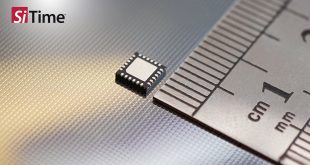By reinventing and fully automating the manufacturing process, spring probe pins can now deliver high performance at the price of a stamped contact for high density, fine pitch applications. Jeff Elliott tells us more
For decades the spring-loaded probe aka pogo-style pin has delivered excellent mechanical and electrical performance in a highly compliant contact. However, this often came at a high cost given that each pin is constructed of three to four discreet parts manufactured and assembled in a laborious, less-than-fully-automated process.
The cost could be so exorbitant, in fact, that when significant volumes of pins are required, many opted to utilise less compliant, lower performance alternative contact technologies to reduce costs.
This approach is becoming less viable, however, with the increasing miniaturisation of integrated circuits, electronic components and devices that pack more circuitry into smaller footprints.
A single test socket for reliability and burn-in testing, for example, can require hundreds and even thousands of spring-loaded probe pins in a fine pitch configuration. The same applies to board-to-board compression connectors. When factoring in multiples of test sockets as well as production-level quantities of connectors, pin quantities can literally run into the millions.
Enter, or perhaps re-enter, the spring probe. With a new approach to pin design and a complete re-invention of the manufacturing process, miniaturised spring probes as small as .2mm are now available that provide a high temperature, current and bandwidth performance pin at the price of a stamped contact.
Traditional pogo-style pins
Although designed and manufactured in subtly different ways, the pogo-style pin is typically constructed of a pin, two plungers and a spring encapsulated in a metal shell.
This style of pin is highly compliant, which means it is designed to compress or “comply” during insertion. This is critical when attempting to maintain a good connection despite potentially uneven surfaces, varying heights, errors in parallelism and flatness, or pivoting or rotating elements.
Although compliancy can be achieved by other techniques, such as bends, buckles, or cantilever-style contacts, additional space between pins is required during compression. Spring-loaded pins operate in a purely vertical fashion, so the maximum space occupied at any time is defined by its diameter. This allows for placement of spring-loaded pins in fine pitch distances as low as .2mm.
The trend toward more compact, high density electronics design – defined as the number of pins in a small area or the distance between pin centres – is already impacting several markets.
Whether creating a temporary connection, such as for testing, or as a permanent board-to-board interconnection, the common denominator is more pins, less real estate.
“Devices used to have 2,000 pins in a two-inch square area. Now they want the same 2,000 pins in a one-half inch square and the only way to do that is to reduce the pitch of the device,” says Ila Pal, chief operations officer of Ironwood Electronics, a manufacturer of high speed sockets and adaptors for characterisation, burn-in, and production testing.
“We were utilising spring probe pins on a 1mm pitch design and more recently at .5mm,” explains Pal. “Then, last year, there were requests to shrink the pitch to .4mm. Now, we are moving even further down to .35mm.”
Germany-based test socket manufacturer EP Ants GmbH, is experiencing the same market trend. According to Rick Taylor, president and co-founder, 70-80 per cent of the test sockets his company manufactures today are for high density applications.
According to Taylor, another market driver is price. Higher density means a higher volume of pins per test socket. Multiply that by the number of sockets required for parallel or serial testing at a single facility and customers expect companies such as EP Ants to deliver the best possible price without sacrificing performance.
“As everything gets smaller and the density gets tighter, pin counts are increasing,” says Taylor. “At the same time, our customers expect to reduce their costs. So we challenge ourselves to find ways to manufacture our sockets at an achievable price whenever possible.”
So when Taylor heard about a spring-probe called the H-Pin that could deliver high performance at a significantly lower price, he was immediately intrigued.
The H-Pin
The H-Pin is a stamped spring probe that delivers the mechanical, electrical and thermal performance of a pogo-style spring probe. The highly compliant pin has a working range up to 1mm with a flat spring rate and can be utilised up to 15GHz with -1.0dB loss, carry up to 4 amps of current and withstand temperatures up to 200°C.
Although there are a few design tweaks, the real departure is in the manner in which complete pin assemblies are manufactured using a high volume BeCu stamping process and a 100 per cent automated, high speed assembly and inspection process that can produce up to 400 pins per minute.
Available in various lengths and pitch sizes as low as .2mm, the product is the brainchild of Plastronics, a global provider of test sockets for semiconductor reliability testing. For more than 40 years, the company has used spring-loaded probe pins to create finished sockets for burn-in, humidity, failure analysis and other test requirements.
Depending on quantities, the spring-loaded probe pins can cost 30-50 per cent less. With thousands of pins potentially in a single test socket or board-to-board connector, the savings can be significant.
According to Taylor, simply reducing the cost meant little without consistent pin quality. To ensure this was the case, EP Ants conducted extensive testing of the H-pin, which included inviting customers to also test the product and provide additional feedback.
“As a test socket manufacturer, we have to rely on the quality of the pins we get from our spring probe supplier,” says Taylor. “The H-pins have a very reliable quality level which is extremely important to us and our customers.”
 CIE Components in Electronics
CIE Components in Electronics



